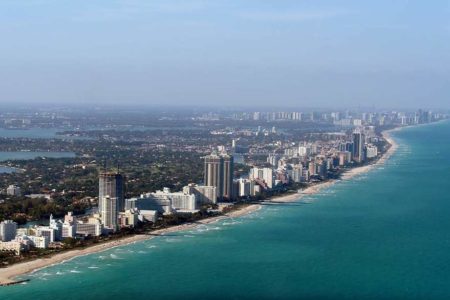 On Sunday, January 27, extremist Muslims bombed a Catholic cathedral during Mass in the Philippines. At least 20 people were killed and 111 wounded.
On Sunday, January 27, extremist Muslims bombed a Catholic cathedral during Mass in the Philippines. At least 20 people were killed and 111 wounded.
At 8:45 am, two explosives were detonated about a minute apart in or near the Cathedral of Our Lady of Mount Carmel in Jolo. According to the Associated Press:
“The initial explosion scattered the wooden pews inside the main hall and blasted window glass panels, and the second bomb hurled human remains and debris across a town square fronting the Cathedral of Our Lady of Mount Carmel, witnesses said.”
Photographs on social media showed human bodies and remains strewn on the street just outside the cathedral. Last heard, the officiating priest, Fr. Ricky Bacolcol, “was still in shock and could not speak about what happened,” said a colleague.
After the first bomb detonated, army troops and police posted outside the cathedral rushed in, at which point the second bomb went off. Fifteen of the slain were civilians, five were military men; 90 of the wounded were civilians.
The cathedral, located in a Muslim-majority area, was heavily guarded; it had been hit before. In 1997, Catholic Bishop, Benjamin de Jesus, was gunned down just outside the cathedral; in 2010, grenades were hurled at it twice, damaging the building.
The Islamic State claimed the most recent attack in a statement, adding that the massacre was carried out by “two knights of martyrdom” against a “crusader temple.” A number of Islamic terror groups, including Abu Sayyaf, operating in the southern Philippines, have pledged allegiance to the Islamic State.
Although the Philippines is majority-Christian (chiefly Catholic), about 24% percent of the population of the southern Philippines, also known as Mindanao, is Muslim. For decades, Islamic separatist groups have been waging a war of terrorism — replete with bombings, burnings, and beheadings (including of two Canadian men) — that has left an estimated 150,000 people dead.
As seen in the most recent attack, for some separatists, apparently nothing less than a religiously supremacist State — modeled after the Islamic State in Iraq and Syria — where the most severe dictates of sharia are enforced, churches are banned, Christians are subjugated, and sex slaves are openly sold, will do.
In other words, the new terrorism in the Philippines is not merely inspired by political or territorial grievances, real or imagined, but rather is imbued with intrinsic hate for the “other” — for the “infidel.”
In May 2017, for instance, an extremist uprising erupted in the majority-Muslim city of Marawi. In one incident, a civilian bus was stopped by jihadis; when 9 passengers were discovered to be Christian — apparently because they were not able to quote the Koran — they were tied together and shot dead, execution style. (Extremists in nations such as Kenya and Nigeria have also been known to separate Muslims from Christians before slaughtering the non-Muslims.) The jihadis who took over Marawi during the uprising forced women into sex-slavery and ordered Christian men embrace Islam or be used as human shields against the Philippine Army.
Churches especially have been targeted. A few examples follow:
- April 29, 2018: A bomb explosion rocked St. Anthony Parish Church in Mindanao during Sunday mass when he church was packed with people attending a mass christening. Although only two of the parishioners were hospitalized, fatalities could have been significant. Police later described the attack as bearing “the signature of an Islamic extremist group.”
- November 10, 2017: Jihadis desecrated and doused a Catholic chapel with gasoline in an effort to torch it in the Mindanao region. Religious images and icons were destroyed.
- May 23, 2017: Extremists inspired by “a demonic ideology,” to quote a Catholic prelate, desecrated and torched the St. Mary’s Cathedral in Marawi. A video of them shouting Islam’s triumphant war cry—”Allahu Akbar!” (“Allah is greater!”)—while stomping on and destroying Bibles, crosses, icons, and statues, before burning the cathedral, can be seen here.
- June 21, 2017: Jihadis vandalized another Catholic church. Describing the desecration as “wicked,” the chief police inspector said the “crucifix and images of the Virgin Mary and Jesus Christ were destroyed while the sacred hosts were thrown all over the floor.”
- December 24, 2016: A grenade was lobbed at a church during Christmas Eve Mass; 16 celebrants were injured.
Violence directed against Christian houses of worship has even prompted churches, such as Marawi’s St. Mary’s Cathedral mentioned above, to close their doors during Easter 2018.
Anti-Christian violence is expressed in other ways. In 2017, a Muslim who converted to Christianity was found slaughtered in his home by local extremist Muslims for having left Islam. A 70 year-old Irish nun living on the island of Mindanao, who spent more than 30 years serving the Philippines, was gagged and repeatedly punched so badly by a masked assailant that she fell unconscious and required surgery.
January’s deadly church-bombing, which claimed 20 lives and wounded more than 100, is the latest reminder that, as with other nations that have a sizeable Muslim minority, the Philippines is embroiled in the jihad. While the ostensible reason behind it may be political or territorial, the sadistic hate that accompanies attacks on Christians and their churches suggests that ideology is the ultimate cause. In this, the jihad in the Philippines is virtually indistinguishable from its many foreign counterparts.






Recent Comments